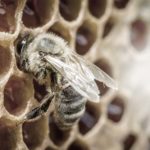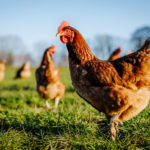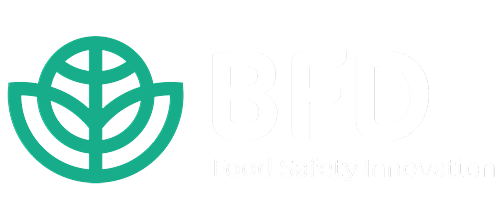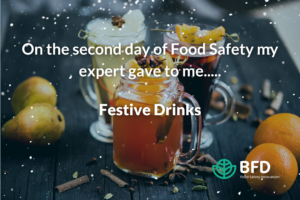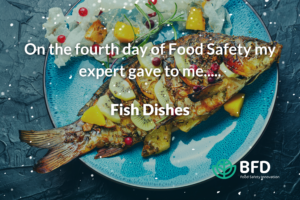
Desserts: Day 7 – 12 Days of Food Safety
Day 7: Desserts
12 Days of Food Safety
Holiday desserts around the world encapsulate a rich tapestry of flavours, textures, and cultural significance, often showcasing an array of fruits, seeds, nuts and spices that infuse these sweet indulgences with their distinctive essence. From the opulent European and Chilean Christmas cakes embellished with dried fruits to the fragrant nutty pleasures of Middle Eastern burbara and the tropical fruit-infused Pavlova traditionally enjoyed during sunny Christmases in Australia and New Zealand, these treats epitomise a celebration of seasonal abundance and ancient culinary traditions.
So far, in our series on food safety, we’ve delved into the various toxins present in our favourite holiday foods. But how do we address foods contaminated with multiple toxins such as pesticides and mycotoxins?
The Escalating Presence of Pesticides and Mycotoxins
Stringent regulations exist in the EU for mycotoxins and pesticides. The European Commission establishes maximum mycotoxin limits in various foods to ensure safety. Supervised by the European Food Safety Authority (EFSA), the EU rigorously regulates the approval, usage, and maximum residue limits (MRLs) of pesticides in farming to safeguard public health and the environment. Similarly, in the US, federal agencies like the FDA and EPA oversee mycotoxins and pesticides in food, setting limits, conducting inspections, and enforcing standards to mitigate health risks. At an international level, the Codex Alimentarius Commission, led by the FAO and WHO, sets global food standards, including pesticide MRLs and mycotoxin limits, serving as benchmarks for countries lacking specific regulatory measures in their food safety protocols1.
Despite these regulations, pesticides and mycotoxins appear to be on the rise. For instance, a study by the Pesticide Action Network (PAN) 2 revealed a staggering 53% increase in contamination by hazardous pesticides in nearly 100,000 popular home-grown fruit samples in Europe over nine years, with the most contaminated fruits including blackberries (51%), peaches (45%), strawberries (38%), cherries (35%), and apricots (35%).
Moreover, contamination levels have significantly surged for fruits like apples (by 117%) and cherries (by 152%) since 2011, when EU governments were to commence the banning of relevant pesticides2. Notably, multiple pesticides have been detected in both EU imports and exports of dried fruits (particularly grapes), with four recorded samples containing up to 21 pesticide residues3. Additionally, many nuts and seeds have shown multi-residue pesticides in sampled instances in Turkey, some well above the recommended levels set by the European Union and Turkish Food Codex (TFC).4
The primary mycotoxins found in dried fruits, nuts and spices – aflatoxins (AFs), and ochratoxin A (OTA) – are known to cause human health issues and economic losses. The Rapid Alert System for Food and Feed (RASFF) and independent reports have highlighted significant OTA contamination in dried grapes, particularly in countries like Turkey, Iran, Uzbekistan, Pakistan, Greece, and South Africa.5 Furthermore, research from China identified up to 36 mycotoxins in a single fruit sample6, Nuts and seeds have also been shown to contain varying levels of aflatoxins and ochratoxin A7, as well as various types of spices internationally.8
The use of pesticides extends beyond conventional purposes, attempting to counter mycotoxin-related issues and enhance human and animal health. In addressing fungal pathogens and mycotoxin production in food, various types of pesticides, including fungicides, are increasingly employed9. However, this practice leads to potentially hazardous levels of pesticides in food, especially in regions with elevated mycotoxin prevalence in crops, where limited access to technology and regulatory guidance exacerbates the spread of these toxins throughout the food chain, leaving limited alternatives in place.
The Solution Ahead: BFD Multiplex Technology
Biorex Food Diagnostics acknowledges the pressing need for technology capable of efficiently detecting multiple targets within a single sample. In 2024, our research and development efforts are concentrated on creating single-target and multiplex lateral flow devices with our Flowsense reader, equipped with qualitative and quantitative capabilities. This innovation aims to enhance accessibility to mycotoxin and pesticide testing worldwide, from producer to consumer.
Keep an eye on our social media platforms through 2024 for the release our new “Flowsense” product range that includes a range of pesticide lateral flow devices.
Have you missed the previous 12 Days of Food Safety? Not to worry. Click the images below to catch up.
References
- Mukhtar K, Nabi BG, Ansar S, Bhat ZF, Aadil RM, Khaneghah AM. Mycotoxins and consumers’ awareness: Recent progress and future challenges. Elsevier 2023; 232(107227): https://www.sciencedirect.com/science/article/abs/pii/S0041010123002131 (accessed 10 December 2023).
- Pesticide Action Network Europe. Forbidden fruit: The dramatic rise in dangerous pesticides found on fruits and vegetables sold in Europe and evidence that governments are failing their legal obligations. 2022; (): https://www.pan-europe.info/sites/pan-europe.info/files/public/resources/reports/ForbiddenFruit_01.pdf (accessed 10 December 2023).
- The Expert Committee on Pesticide Residues in Food (PRiF). Report on the pesticide residues monitoring programme: Results of Quarter 4 2022. Department for Environment, Food and Rural Affairs 2023; (): https://www.gov.uk/government/collections/pesticide-residues-in-food-results-of-monitoring-programme (accessed 10 December 2023).
- Aydin A, Ulvi M. Residue levels of pesticides in nuts and risk assessment for consumers. Wageningen Academic Publishers 2019; 11(6): https://www.wageningenacademic.com/doi/10.3920/QAS2018.1405 (accessed 10 December 2023).
- Gonzalez-Curbelo MA, Kabak B. Occurrence of Mycotoxins in Dried Fruits Worldwide, with a Focus on Aflatoxins and Ochratoxin A: A Review. MDPI 2023; 15(9): https://www.mdpi.com/2072-6651/15/9/576 (accessed 10 December 2023).
- Zhao R, Huang QW, Yu ZY, Han Z, Fan K, Zhao ZH, Nie DX. Simultaneous determination of 36 mycotoxins in fruits by QuEChERS coupled with ultra-performance liquid chromatography-tandem mass spectrometry. Chinese Journal of Chromatography 2023; 41(9): https://pubmed.ncbi.nlm.nih.gov/37712540/ (accessed 10 December 2023).
- Ono EYS, Hirooka EY, Rossi CN, Ono MA. Chapter 13 – Mycotoxins in Seeds and Nuts. Nuts and Seeds in Health and Disease Prevention 2011; (): . https://www.sciencedirect.com/science/article/abs/pii/B9780123756886100131 (accessed 10 December 2023).
- Thanushree MP, Sailendri D, Yoha KS, Moses JA, Anandharamakrishnan C. Mycotoxin Contamination in food: An exposition on spices. Trends in Food Science & Technology 2019; 93(): https://www.sciencedirect.com/science/article/abs/pii/S0924224418306757 (accessed 10 December 2023).
- Kumar M, Chand R, Shah K. Mycotoxins and Pesticides: Toxicity and Applications in Food and Feed. Microbial Biotechnology 2018; (): https://link.springer.com/chapter/10.1007/978-981-10-7140-9_11 (accessed 10 December 2023).
